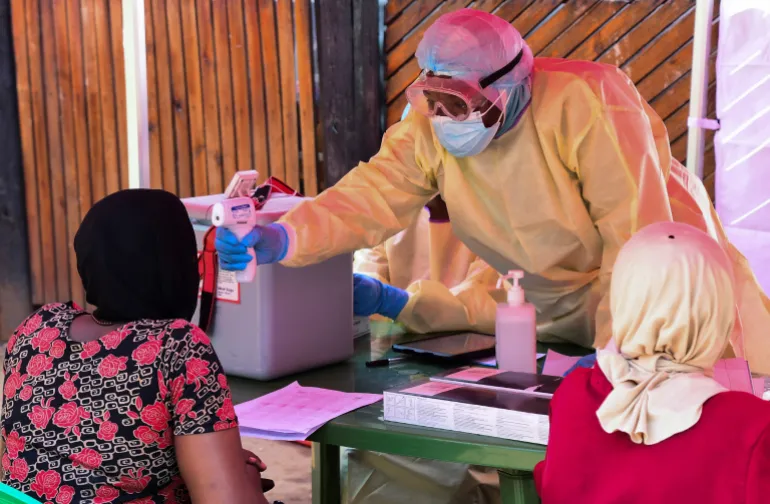Uganda has reported its second confirmed death from Ebola, a highly infectious and often fatal disease, according to the World Health Organization (WHO). The victim, a four-year-old child, succumbed to the virus earlier this week, raising the number of confirmed Ebola cases in the country to ten.
Ebola Outbreak in Uganda: What We Know
The outbreak was first declared in January following the death of a male nurse at Mulago National Referral Hospital in Kampala, Uganda’s capital. Health officials and WHO representatives have been closely monitoring the situation as they work to contain the spread of the virus.
On Saturday, WHO’s Uganda office announced via X (formerly Twitter) that the Ministry of Health had confirmed the latest fatality at Mulago hospital. The statement read, “An additional positive case in Mulago hospital of a four-and-a-half-year-old child, who tragically passed away on Tuesday.”
Current Situation and Containment Efforts
The Ugandan Ministry of Health had previously stated on February 18 that all eight Ebola patients under medical care had been discharged. However, authorities are still tracking potential infections. At least 265 individuals who had contact with infected patients remain under strict quarantine in Kampala and two other cities to prevent further transmission.
Mulago Hospital, Uganda’s primary referral facility for Ebola cases, continues to serve as the central treatment center for suspected and confirmed patients. Health officials are urging the public to adhere to safety protocols, including avoiding contact with bodily fluids and maintaining hygiene practices to reduce the risk of infection.
Understanding Ebola: Symptoms and Transmission
Ebola is a severe hemorrhagic fever caused by the Ebola virus. The disease is known for its rapid spread and high fatality rate. Symptoms typically begin with:
- Fever
- Headache
- Muscle pain
- Fatigue
As the disease progresses, patients may experience vomiting, diarrhea, internal bleeding, and organ failure. The virus is transmitted through direct contact with the bodily fluids (blood, saliva, sweat, vomit, urine, feces, breast milk, or semen) of an infected person or contaminated materials such as bedding and medical equipment.
Efforts to Control the Spread
Ugandan health officials, in collaboration with WHO, are intensifying surveillance and contact tracing efforts. The government has also reinforced public awareness campaigns to educate citizens on preventive measures, including:
- Prompt medical consultation for symptoms.
- Safe burial practices for suspected Ebola victims.
- Isolation and monitoring of confirmed cases and contacts.
- Deployment of rapid response teams to affected areas.
Health experts stress that early detection and treatment significantly improve survival rates. Uganda has previously battled Ebola outbreaks, most notably in 2000 and 2012, and has since developed stronger response mechanisms.
Global and Regional Concerns
Neighboring countries are on high alert, with health authorities in Kenya, Rwanda, and the Democratic Republic of Congo increasing screening measures at border points. International health organizations are closely watching the outbreak’s development, emphasizing the need for rapid containment to prevent cross-border transmission.
Dr. Jane Aceng, Uganda’s Minister of Health, assured the public that the government is fully committed to handling the crisis. “We are working closely with international partners to ensure a swift and effective response. Our priority is to save lives and prevent further spread,” she said in a televised statement.
While Uganda has successfully contained previous Ebola outbreaks, the latest resurgence serves as a reminder of the persistent threat the virus poses. The WHO and Ugandan health officials are urging vigilance, timely reporting of symptoms, and adherence to public health guidelines.
For continued updates on this developing story, visit Issue N Fact.

